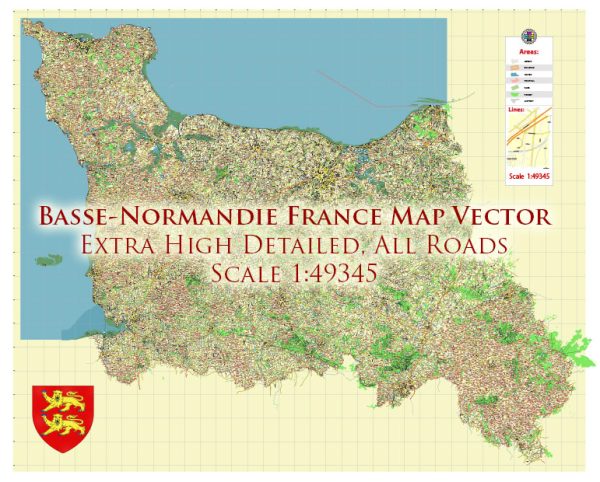It’s important to note that administrative divisions and regional names in France have undergone changes. Basse-Normandie, as a regional administrative entity, no longer exists. In 2016, the regions of Basse-Normandie and Haute-Normandie were merged to form a new administrative region called Normandy (Normandie).
That said, Normandy is a region in northern France, and I can provide a general description of its principal waterways and railroads as of my last update:
- Waterways:
- Seine River: The Seine River plays a significant role in the northern part of Normandy. It flows through the region, passing through cities like Rouen, the capital of Normandy.
- La Manche (English Channel): Normandy has a coastline along the English Channel, providing access to maritime transport.
- Orne River: The Orne River is another important watercourse in the region, flowing through cities such as Caen.
- Railroads:
- Main Lines: Normandy is well-connected by rail, with several main lines passing through the region. The railway network facilitates transportation to and from major cities, including Caen, Rouen, and Le Havre.
- High-Speed Rail (TGV): The high-speed rail network in France includes connections to Normandy. The Paris-Caen-Cherbourg line is an important route, providing high-speed train services to and from the capital.
- Regional Rail Services: Normandy has a network of regional rail services connecting smaller towns and cities within the region. These services are essential for local transportation and commuting.
- Port Connections: The presence of major ports, such as Le Havre, contributes to the importance of rail transport for the movement of goods to and from these ports.
It’s recommended to check more recent and specific sources for the latest information on the transportation infrastructure in the Normandy region, as developments and changes may have occurred since my last update.


 Author: Kirill Shrayber, Ph.D.
Author: Kirill Shrayber, Ph.D.